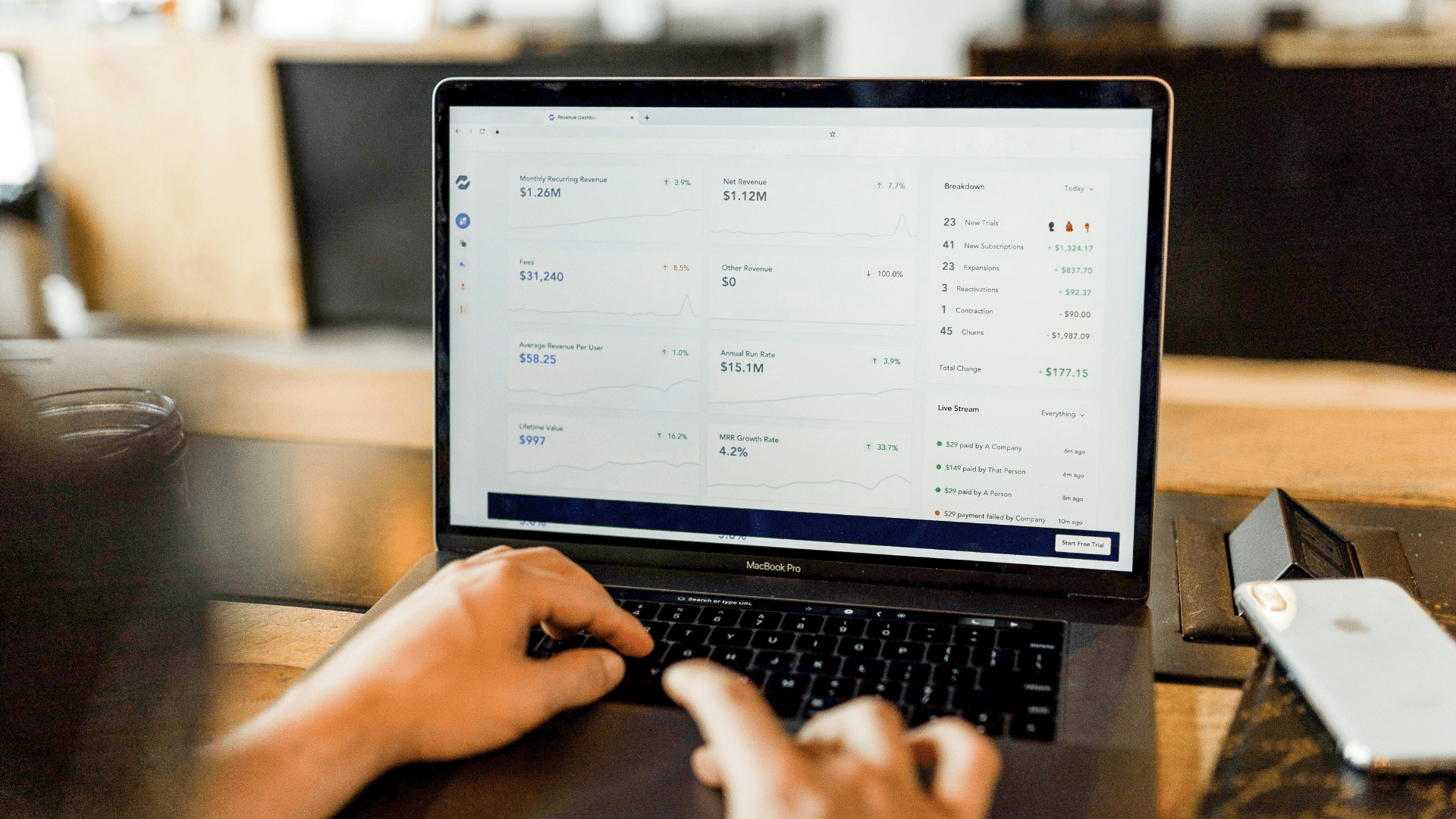Search engine optimisation (SEO) is a strategic process often misunderstood as a quick fix for online visibility. When clients invest in SEO, they’re usually told the same thing: “It takes 6+ months to see results.” While it is true that SEO takes time, it doesn’t mean those first few months are silent.
They are far from it.
Clients typically enter the process with high expectations, hoping for immediate results. The reality is far more nuanced. SEO takes time and is not a quick fix but a strategic, patient approach that builds online success methodically and intentionally. It’s about understanding your audience, creating valuable content, and earning trust over time. This nuanced reality requires managing client expectations and communicating the long-term nature of SEO as a strategic investment.
The initial phase of any SEO strategy is one of the most critical periods, laying the foundation for long-term success. But how do you keep your client engaged and reassured during this foundational period? Focusing on detailed deliverables and framing SEO as a strategic growth driver from multiple angles.

The Foundation of Technical Excellence
The initial months of an SEO strategy are critical, though often invisible to the untrained eye. Technical optimisation forms the bedrock of any successful search strategy, requiring a comprehensive approach beyond surface-level adjustments. A thorough website audit becomes the first crucial step, revealing your website’s intricate health.
SEO audits represent more than just a checklist of potential issues. They are a diagnostic tool that provides deep insights into how search engines perceive and interact with a website. Crawl errors, for instance, are not mere technical glitches but significant barriers that prevent search engines from properly indexing critical content. These errors can range from broken links and redirects to complex structural issues that impede search engine understanding.
On-site optimisations transform these insights into actionable improvements. Updating meta tags becomes an art form of strategic communication, crafting compelling snippets that include targeted keywords and enticing users to click. Header structure optimisation goes beyond simple formatting, creating a clear hierarchical understanding of content that users and search algorithms can intuitively navigate.
Content: The Strategic Storytelling of SEO
Content creation in the early stages of SEO is far more sophisticated than simply producing blog posts. It represents a targeted approach to addressing user needs, bridging the gap between a client’s expertise and their audience’s search intentions. Keyword research transforms from a mechanical process to a strategic exploration of user behaviour, market needs, and competitive landscapes.
The most effective content strategies emerge from a deep understanding of search intent. This means moving beyond simple keyword volumes and difficulties to truly comprehend the questions, challenges and desires driving user searches. A well-crafted piece of content doesn’t just target a keyword; it provides genuine value, answers specific user questions, and establishes the client as a trusted authority in their field.
Refreshing existing content becomes equally important as creating new material. This process involves more than simple updates—it’s a comprehensive evaluation of how existing content can be enhanced to meet current user needs, incorporate new data, and improve overall search relevance. By continuously refining and updating content, businesses create a dynamic presence that remains relevant and valuable.

The Precision of Link Building
Link building in modern SEO takes time and is a nuanced strategy of quality over quantity. Each acquired link represents a vote of confidence, a carefully selected connection that adds genuine value and authority to a website.
The days of mass link acquisition are long gone, replaced by a more strategic approach considering domain authority, relevance, and the natural ecosystem of web connections.
Local businesses benefit from an even more targeted approach. Google Business Profile optimisation, local citations, and strategic review generation create a comprehensive local digital footprint. These efforts go beyond simple online listings, creating a robust local digital presence that connects businesses with their immediate community and broader digital audiences.
Understanding the SEO Timeline
Client education becomes paramount in managing expectations during the initial months of an SEO engagement. Search engines like Google don’t instantaneously process website changes. The crawling and indexing process is complex and influenced by content, website size, performance, health, update frequency, and overall authority.
Different industries present unique challenges in search optimisation. Seasonal keywords, competitive landscapes, and specific market dynamics all play crucial roles in determining the pace and effectiveness of SEO strategies. A technology startup will have different optimisation challenges than a local restaurant or a professional services firm. This is where an experienced SEO consultant can step in and set you on the right path.

SEO as a Comprehensive Marketing Investment
The most critical communication perspective is viewing SEO not as a standalone tactic but as a comprehensive marketing investment. Unlike paid advertising, which stops the moment funding ceases, SEO takes time to build a sustainable, compounding sales and marketing asset. Each optimisation, content piece, and strategic link becomes a building block of long-term sales and marketing success.
The true power of SEO lies in its ability to create an integrated marketing ecosystem. Optimised websites see improvements not just in search rankings but across all digital marketing channels.
Improved site structure and content quality enhance user experience, potentially increasing conversion rates from email marketing, social media, and direct traffic.
Measuring and Communicating Progress
As initial strategies take root, reporting transitions from potential to performance. Organic traffic growth, keyword ranking progressions, and conversion rate improvements become tangible measures of success. However, the most effective reporting goes beyond raw numbers, providing context, interpretation, and forward-looking strategies. For instance, if a particular keyword shows promising progress, the report could suggest doubling down on content creation. Or, if a specific type of backlink is proving to be particularly effective, the report could recommend a more aggressive link-building strategy in that direction.

Justifying the SEO Investment
Search engine optimisation represents a unique opportunity to transform marketing spending from a short-term expenditure to a long-term value-creation mechanism. It’s an investment in your digital future.
Traditional marketing channels often demand continuous financial input with diminishing returns.
A print advertisement runs once and disappears.
A radio spot plays for a few weeks and fades from memory.
Digital advertising requires constant budget allocation to maintain visibility.
However, SEO operates on a fundamentally different economic model of compounding value and sustainable growth. Each improvement in SEO, be it technical or content-related, adds to the overall value of your digital presence, leading to a compounding effect on your online visibility and audience engagement over time.
The true power of SEO lies not in its immediate impact but in its ability to build a resilient, adaptive digital infrastructure that continuously generates value. Unlike other marketing approaches that provide transient visibility, SEO creates a permanent asset for your business: an optimised digital presence that attracts, engages, and converts high-intent audiences.
Compound Returns Over Time
SEO takes time but is a strategic investment that generates increasingly significant returns as time passes. Each technical SEO improvement, content optimisation, and strategic backlink creates a multiplier effect that enhances digital performance. It’s a journey of continuous improvement and growth.
Consider how individual optimisations build upon each other. A technically sound website loads faster, providing a better user experience and allowing search engine crawlers to understand and index content more effectively. This foundational improvement means that subsequent content creation and link-building efforts become exponentially more effective. Each optimisation is not an isolated action but a strategic building block in a comprehensive digital growth strategy.

Holistic Growth Across Digital Channels
SEO is not a siloed marketing tactic but a comprehensive approach that elevates an organisation’s digital ecosystem. An optimised website doesn’t just improve search rankings. It enhances performance across all digital marketing channels. Improved site structure, compelling content, and technical excellence boost conversion rates from paid advertising, email marketing, social media campaigns, and direct traffic.
The interconnected nature of digital marketing means that SEO improvements create a rising tide that lifts all boats. Enhanced website content improves ad quality scores, reducing pay-per-click costs. Better user experience increases email engagement rates. Improved site performance supports social media marketing efforts by providing compelling landing pages that convert traffic more effectively.
Sustainable Traffic Generation
The most compelling argument for SEO investment is its sustainable traffic generation model. Paid advertising offers immediate visibility but requires continuous financial input. The moment you stop spending, your visibility vanishes. SEO, in contrast, builds a permanent digital asset that continues delivering high-intent visitors long after initial investments.

This sustainable traffic approach transforms marketing from a cost centre to a value-generation mechanism. Each piece of optimised content, strategic backlink, and technical improvement becomes a permanent acquisition channel that continues to attract potential customers without ongoing direct expenses.
Proactive Digital Adaptation
SEO provides more than traffic. It offers strategic adaptability. Search engine algorithms constantly change, consumer behaviours shift, and technological innovations emerge. A robust SEO strategy prepares businesses to survive and thrive amid these changes.
SEO ensures that businesses remain relevant and competitive by continuously monitoring industry trends, understanding emerging search behaviours, and maintaining a flexible digital infrastructure. It’s not just about ranking today but preparing for tomorrow’s digital opportunities.
The Strategic Choice
Investing in SEO ultimately chooses between short-term visibility and long-term digital resilience. It represents a commitment to building a sophisticated, adaptive digital presence that generates value continuously and strategically.
SEO is not an expense for businesses that want to move beyond immediate marketing tactics and toward sustainable growth—it’s the most intelligent investment in their digital future.

The Transition to Results
When the results start coming in, pivot the focus of your reports to:
Data-Driven Outcomes: Highlight metrics like increased organic traffic, improved keyword rankings, and higher conversion rates.
Aligning with Projections: Compare actual outcomes with your initial forecasts to demonstrate progress.
Next Steps: Outline the ongoing strategies to maintain and accelerate growth, such as scaling content creation or exploring new keyword opportunities.
Frequently Asked Questions: Understanding the SEO Timeline
Why does SEO take so long to see results?
SEO takes time because it’s a process of building trust with search engines and users. It requires optimising your website, creating valuable content, and earning authority in your niche—none of which happens overnight.
Search engine optimisation is fundamentally about building digital credibility, which mirrors real-world reputation building. Just as a business can’t become a trusted community leader overnight, websites and SEO takes time and can’t instantly become authoritative sources in search engines. The extended timeline is rooted in several critical factors.
Search engines like Google use complex algorithms that carefully evaluate websites across multiple dimensions. These algorithms assess hundreds of signals, including content quality, technical performance, user experience, and external validation through backlinks. Each optimisation is like adding a small piece to an intricate puzzle, with search engines gradually recognising and rewarding consistent, high-quality improvements.
The process involves multiple stages that cannot be rushed. Technical optimisations must be implemented and verified. Content must be created, indexed, and evaluated for relevance. Backlinks need to be acquired naturally and strategically. Each stage requires careful execution and patience, like cultivating a garden rather than installing artificial turf.
How long does it usually take for SEO to work?
SEO takes time, and while it varies depending on your industry and competition, you can expect noticeable improvements in 4-6 months, with significant results often appearing after 9-12 months of consistent effort.
The six-month benchmark is not arbitrary but is based on multiple technical and algorithmic considerations. Search engines require time to:
Crawl and Index Changes: When improvements are made to a website, search engines must discover, process, and evaluate these changes. This is a process that takes time and depends on the size and current authority of the website.
Gather Performance Data: Search algorithms need sufficient data to understand how users interact with updated content. Metrics like click-through rates, time on page, and bounce rates help determine content relevance and quality.
Build Domain Authority: Credibility is earned through consistent performance. Backlinks, content quality, and technical excellence are assessed over time, not instantly.
The six-month period allows for a comprehensive evaluation cycle. During this time, strategic SEO work creates a strong foundation, implements targeted improvements, and begins to demonstrate measurable results. It’s important to note that while significant improvements often become visible around the six-month mark, SEO is an ongoing process of continuous optimisation.
Can SEO results be accelerated?
While certain strategies like improving technical SEO and creating high-quality content can help, SEO takes time because it’s about sustainable growth, not quick fixes.
Why can’t I just pay for faster SEO results?
SEO takes time because search engines prioritise trust and relevance. Paying for shortcuts like spammy backlinks can harm your website’s credibility, leading to penalties and slower long-term results.
What should I focus on while waiting for SEO results?
While SEO takes time, focus on creating valuable content, improving your website’s user experience, and building your brand’s authority. These efforts will compound and lead to stronger results over time.
Is SEO a Slow Process?
Calling SEO slow is an oversimplification. Describing it as a methodical, strategic approach to digital growth is more accurate. While immediate results aren’t typical, the work behind the scenes is constant and dynamic. Think of SEO as building a robust, sustainable infrastructure for your business.
The perceived slowness comes from traditional advertising models where results can be instantaneous. Pay-per-click advertising delivers immediate traffic but is a temporary solution with ongoing costs. SEO, in contrast, builds a permanent asset. Each optimisation, each piece of content, and each technical improvement compound over time, creating a self-sustaining mechanism for attracting high-quality, organic traffic.
Modern businesses increasingly recognise that digital marketing is about more than quick wins but sustainable growth strategies. SEO provides long-term value that continues delivering results long after initial investments, making it one of the most cost-effective marketing approaches.

SEO Takes Time: Final Thoughts
SEO is like building your personal reputation. Trust takes time to earn, whether through delivering quality work (content) or getting endorsements (backlinks). You can’t rush people into trusting you overnight.
Search engine optimisation is a journey of continuous improvement, not a destination. By providing transparent, strategic reporting demonstrating ongoing value, businesses can transform client expectations from short-term quick wins to long-term digital growth strategies.
The most successful SEO engagements are built on trust, transparency, and a shared understanding that digital success is a collaborative, evolving process that takes time. Each optimisation becomes a step towards greater visibility, meaningful connections, and sustained digital growth.
The most successful SEO engagements are collaborative partnerships that view digital growth as an ongoing improvement, adaptation, and strategic development journey.



